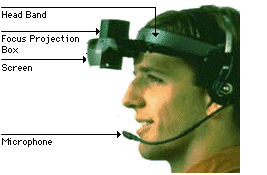|
||||||
 |
Navigator 2 is a computer system that provides mobile access to information. It's development was guided by the idea that large quantities of information, such as thousand-page maintenance manuals, could be compressed into electronic form and accessed through a small, lightweight computer worn on the body. In one application, inspectors of Boeing aircraft use Navigator to examine the skin of aircraft for cracks and corrosion during maintenance. The location and type of each defect found is recorded on the Navigator 2 (using a graphical representation of the aircraft as a location indicator). This type of inspection requires crawling over all of the aircraft's skin, typically standing on a "cherry picker" but also attached via safety harness and standing on top of the aircraft. The primary input is a joystick providing general 2-dimensional input that is useful for positioning on the geographic-based input where location is important. The joystick is used in conjunction with speech to mark discrepancies. Field evaluations for aircraft inspection at McClellan Air Force Base indicate not only approximately a 20 percent savings in inspection time but also a dramatically reduced inspection data entry time from hours to minutes. Navigator consists of 5 parts. A wearable computer which is essentially a computer worn around the waist, a head worn display which displays the computer's information, a harness to distribute the weight of the device, and a joy pad for navigating and selecting information. This project was a result of a two semester initiative of teachers and students from many disciplines lead by Dick Martin, Dan Siewiorick, Asim Smailagic, Chris Kasaback, John Stivoric and Randy Casciola of EDRC and David Miller and Len Bass of the Robotics Institute at CMU. |



